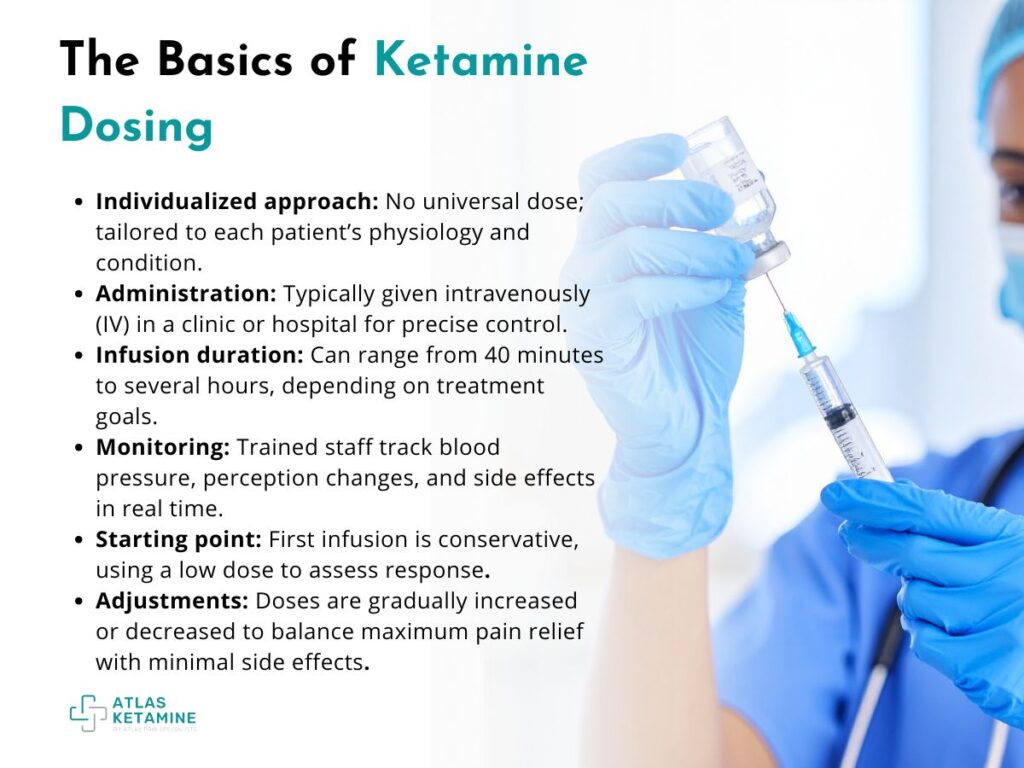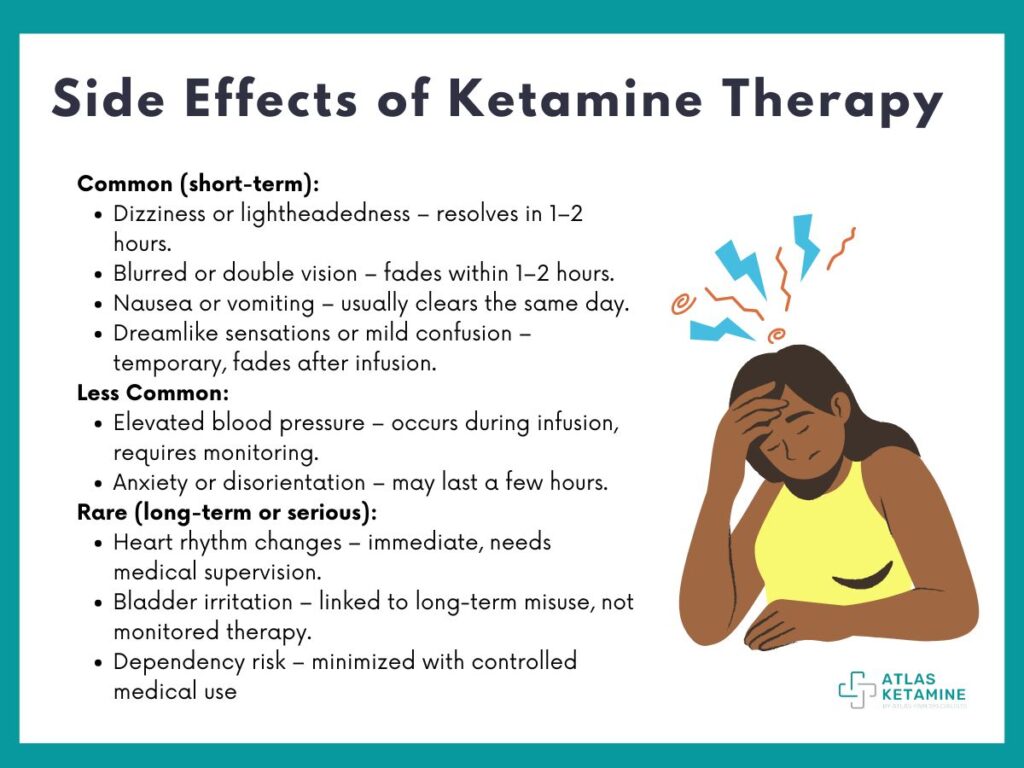Chronic pain can be relentless, shaping daily life in ways most people never see. When traditional medications do not provide relief, patients and clinicians often start looking beyond standard prescriptions. Among the newer treatment approaches, ketamine therapy has gained attention for its potential to reset the way the brain processes pain.
First used in the 1960s as a surgical anesthetic, ketamine is now being explored as a tool for nerve-related and treatment-resistant pain. To make the therapy both effective and safe, the dosing process must be carefully tailored. The key to ketamine’s effectiveness lies in how thoughtfully its dose is calculated and adjusted for each patient. Let's look at the dosing process in ketamine therapy
The Basics of Ketamine Dosing
When people first hear about ketamine therapy, one of the most common questions is, “How much is given?” The answer is more complex than a fixed number. Unlike over-the-counter medications that list standard dosages on the label, ketamine dosing depends on an individual’s physiology and condition. There is no one-size-fits-all formula because every patient metabolizes and responds to ketamine differently.
Ketamine for pain is typically administered intravenously in a clinic or hospital setting. This allows precise control over how quickly the medication enters the bloodstream and how much is delivered at a time. Infusions can last anywhere from 40 minutes to several hours, depending on the condition being treated. Because ketamine can temporarily alter perception and raise blood pressure, infusions are always monitored by trained professionals.

The first infusion is usually conservative, meaning the dose is kept at the lower end. This allows clinicians to see how the patient responds. From there, adjustments can be made, either increasing or decreasing the amount until the balance between pain relief and tolerable side effects is found.
Step-by-Step Adjustments
Ketamine therapy does not rely on a single session. Instead, it is typically offered as a series of infusions spread over days or weeks. Each session provides feedback that helps refine the dose moving forward.
Tracking the First Infusion
The first infusion is considered a trial run. It sets the baseline for how the patient’s body reacts to ketamine. During this time, clinicians carefully record physical responses such as blood pressure and heart rate, as well as any changes in pain perception.
Refining Through Feedback
After the session, patients often keep a diary of symptoms, sleep patterns, and pain levels. These notes go far beyond a number on a pain scale. A patient may notice, for example, that while their pain level stayed the same, they slept more deeply and woke up less often at night. Another may find that although pain relief was mild, their mood lifted in a noticeable way, giving them more energy to get through daily routines. This type of feedback provides a fuller picture of how ketamine affects the person’s quality of life, not just their pain scores.
These diaries also help identify side effects that might otherwise be overlooked. A patient might record that they felt unusually anxious two days after an infusion or experienced nausea when they skipped meals before treatment. By capturing these details, clinicians can fine-tune not only the dosage but also the timing and supportive care around infusions.
Building Toward Maintenance
Once an effective dose is found, infusions may continue for a few weeks to consolidate benefits. Eventually, sessions are spaced farther apart, moving into what is called the maintenance phase. This process helps sustain results without exposing the patient to unnecessary risks. Maintenance schedules vary some people need monthly sessions, while others may only require treatments every few months.
Factors That Influence Dose
The amount of ketamine used is shaped by more than weight alone. Clinicians consider a wide range of variables to decide the correct level. Patient history, concurrent medications, and the type of pain condition all directly affect how ketamine is dosed.
- Weight and metabolism: While many protocols use weight-based formulas (such as milligrams per kilogram), not everyone processes ketamine at the same rate.
- Type of pain: Neuropathic pain, such as from nerve injuries or complex regional pain syndrome, often requires different dosing than pain from arthritis or muscle disorders.
- Medical conditions: Patients with liver issues or high blood pressure may require modifications since ketamine affects both systems.
- Concurrent medications: Antidepressants, blood pressure medications, and certain anticonvulsants may interact with ketamine, prompting lower or slower dosing schedules.
Another often-overlooked factor is genetic variation and age. People metabolize ketamine differently depending on their genetic makeup, particularly in how their liver enzymes break it down. Some individuals are “fast metabolizers,” meaning they process ketamine quickly, which may shorten its pain-relieving effects.
Others metabolize more slowly, requiring lower doses to avoid side effects. Age also plays a role. Younger patients tend to tolerate higher doses, while older adults may need more conservative infusions because of slower metabolism and higher sensitivity to blood pressure changes. These differences highlight why dosing is always personalized rather than standardized.
Table 1. Factors That Influence Ketamine Dosing
| Factor | Why It Matters | Example Adjustment |
| Body weight & metabolism | Determines initial milligram per kilogram calculation | Higher weight may mean higher baseline dose |
| Pain type | Neuropathic vs musculoskeletal pain respond differently | Neuropathic pain may need longer infusions |
| Medical conditions | Liver, heart, or blood pressure conditions alter safety | Patients with hypertension may receive lower doses |
| Concurrent medications | Drug interactions may change ketamine metabolism | Antidepressants may require slower titration |
| Genetics & age | Enzyme activity and age affect drug breakdown | Older adults may require lower doses |
Dosing Protocols in Practice
Protocols vary from clinic to clinic, but some patterns are widely used. Most patients begin with a loading phase involving multiple infusions, followed by maintenance treatments if improvement is seen.
During the loading phase, infusions may be scheduled several times per week. This frequent exposure helps the brain adapt to ketamine’s effects and build a foundation of pain relief. Once benefits are established, sessions are spaced out perhaps once every few weeks or months to maintain results without overuse.
Table 2. Common Ketamine Dosing Protocols for Pain
| Stage | Typical Frequency | Purpose |
| Initial/loading | 4–6 infusions over 2 weeks | Establish response and determine effective dose |
| Adjustment/titration | 1–2 infusions as needed | Fine-tune balance between relief and side effects |
| Maintenance | Every 4–8 weeks | Sustain benefits over time |
Some clinics experiment with alternative delivery methods such as intranasal sprays or oral lozenges. These may be used in specific cases but are less predictable than IV infusions. Intravenous dosing remains the gold standard because it provides steady, measurable control.
Side Effects and Monitoring
Ketamine therapy is powerful, but it can bring side effects that require careful management. Monitoring ensures that any temporary discomforts or unexpected reactions are handled safely, giving patients peace of mind throughout the process. Clinics generally use blood pressure cuffs, oxygen monitors, and trained staff to track responses in real time.

Short-Term Side Effects
During and shortly after infusion, patients may experience dizziness, blurred vision, nausea, or a dreamlike sensation. These usually fade within an hour of the session ending, but staff remain present to support the patient throughout. In many cases, small adjustments such as providing anti-nausea medication or lowering infusion speed can make a big difference in comfort.
Serious Reactions
Although rare, some patients may see blood pressure spikes, irregular heart rhythms, or prolonged confusion. These risks are why ketamine is always given in a medical setting where trained staff and equipment are available. Quick interventionlike pausing the infusion or administering supportive medication helps prevent complications from escalating.
Long-Term Concerns
Chronic misuse of ketamine is linked to bladder irritation and dependency. In controlled medical environments, these risks are minimized by limiting frequency and documenting every session. Regular reassessments help ensure safety and prevent unnecessary exposure, allowing patients to benefit from pain relief without long-term harm. Clinics also encourage open communication so patients can report any delayed symptoms between visits.
Table 3. Common vs Rare Side Effects of Ketamine Therapy
| Side Effect | Frequency | Duration |
| Dizziness/lightheadedness | Common | Resolves within 1–2 hours |
| Blurred or double vision | Common | Resolves within 1–2 hours |
| Nausea or vomiting | Common | Resolves same day |
| Elevated blood pressure | Less common | During infusion only |
| Anxiety or confusion | Less common | Can last several hours |
| Bladder irritation (with long-term misuse) | Rare | Develops over months to years |
| Heart rhythm changes | Rare | Immediate, requires monitoring |
The Patient Experience
Patients often describe ketamine sessions as unlike any other medical treatment. The infusion room is typically quiet, with dimmed lighting, and some clinics allow calming music. During the infusion, sensations may shift some report feeling lighter, while others experience mild visual changes. Because of these effects, patients cannot drive home afterward and must arrange transportation.
After several sessions, many report not just pain relief but also improvements in mood and resilience. These broader benefits are linked to ketamine’s effects on brain chemistry, particularly in resetting pathways related to both pain and depression. The therapy addresses not only physical discomfort but also the emotional weight that chronic pain often carries.
Who Is Not a Good Candidate for Ketamine Therapy?
Ketamine therapy has its limits. Some people face higher risks, making them unsuitable candidates. Those with uncontrolled high blood pressure, severe heart disease, active psychosis, or significant substance misuse history are generally advised against ketamine treatment. Pregnant or breastfeeding women are also typically excluded due to unknown risks for infants.
Patients with liver disease or glaucoma may require additional caution, as ketamine can place stress on these systems. Children and adolescents are only considered under strict specialist guidance.
In short, ketamine therapy can be transformative for the right patient, but it is not a universal solution. Screening is as important as dosing, ensuring safety and maximizing potential benefits. For anyone considering this therapy, the best next step is a candid conversation with a knowledgeable clinician who can evaluate whether the benefits outweigh the risks.
